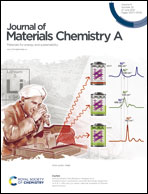Recent advances in photocatalytic degradation of plastics and plastic-derived chemicals
Abstract
Plastic products, used in almost all aspects of daily life because of their low cost, durability, and portability, can be broken down into micro- and nano-scale plastics, thereby increasing the risk of human ingestion. Common plastic additives (polybrominated diphenyl ethers, nonylphenols, phthalic acid esters, etc.) will continue to be released into the environment during the aging and decomposition process, leading to an immeasurable and lasting negative impact on the environment. Recently, photocatalytic technology has been recognized as one of the promising proposals to degrade environmental organic pollutants, including plastics and plastic-derived chemicals. However, there are no systematic reviews on the photocatalytic degradation of plastics and plastic-derived chemicals in the current literature. Herein, the photocatalytic degradation of plastic fragments and major plastic-derived chemicals, including phthalic acid ester plasticizers, nonylphenol antioxidants, bisphenol A plasticizer and brominated flame retardants, is systematically investigated. And we reviewed the process and mechanism of photocatalytic degradation of these pollutants. The outlook section, offering insights into the future directions and prospects of photocatalytic degradation of plastics and plastic-derived chemicals, will be highlighted with the aim of overcoming the present limitations by exploiting more efficient photocatalysts and exploring creative application methods.

- This article is part of the themed collection: Journal of Materials Chemistry A Recent Review Articles


 Please wait while we load your content...
Please wait while we load your content...